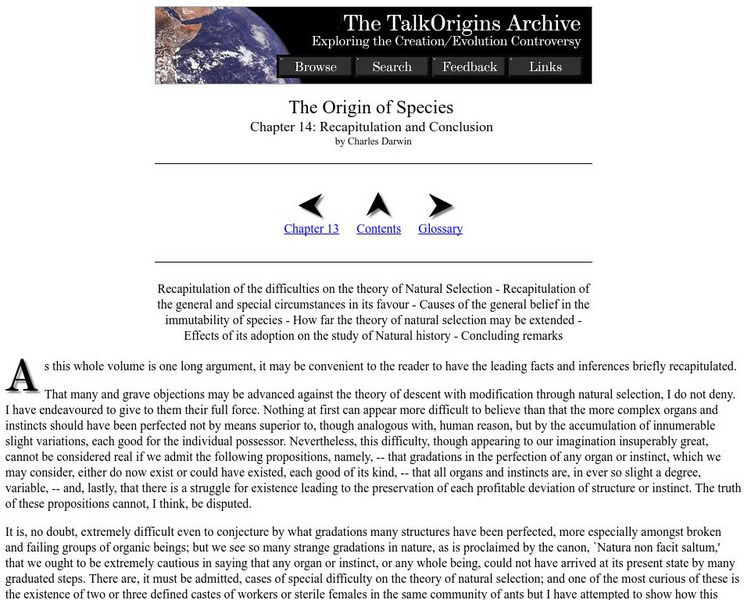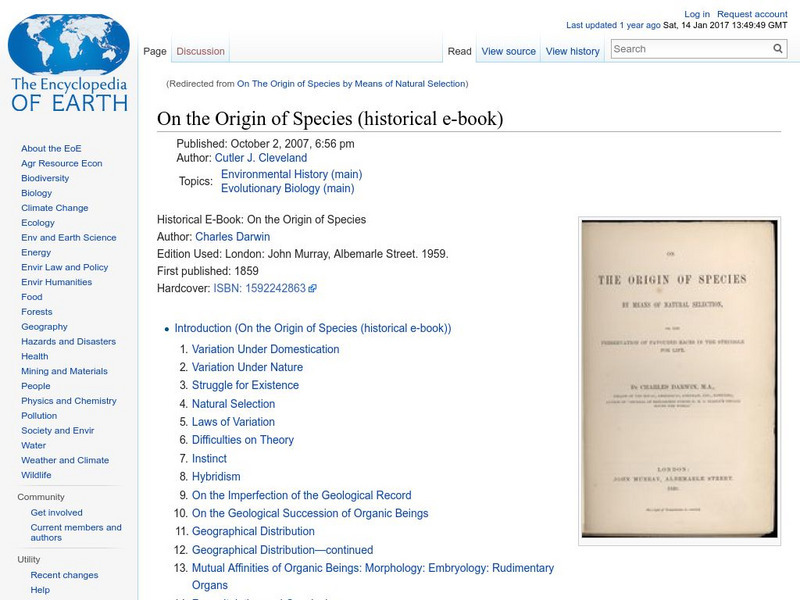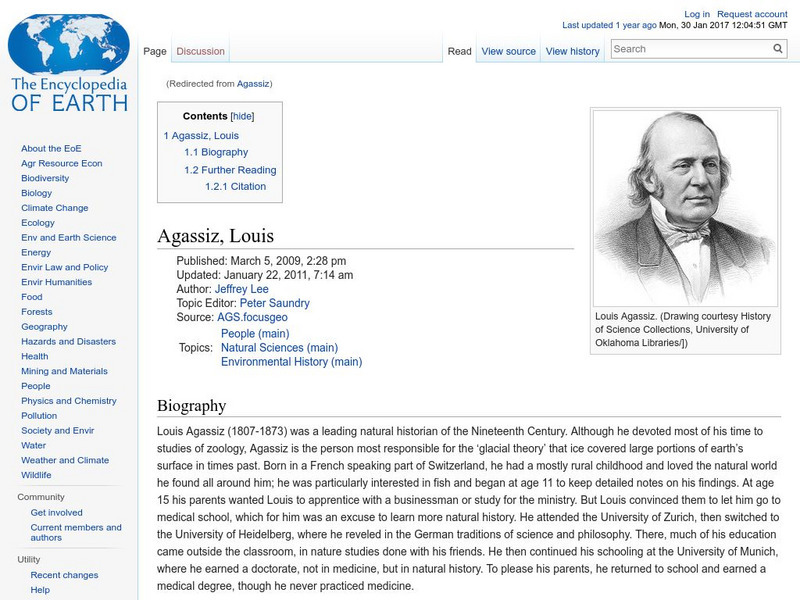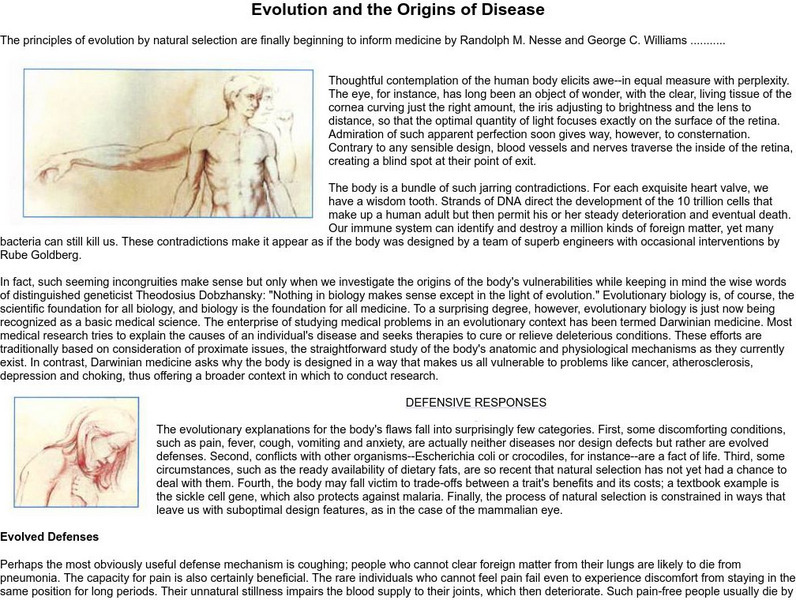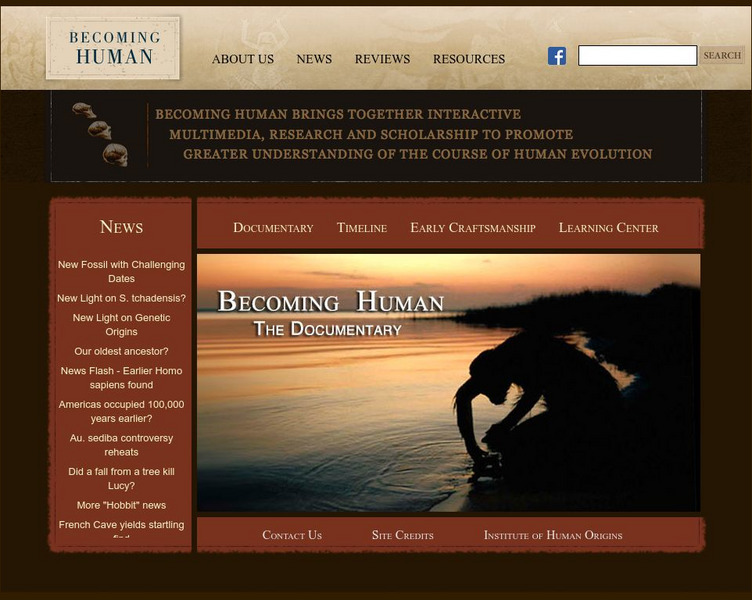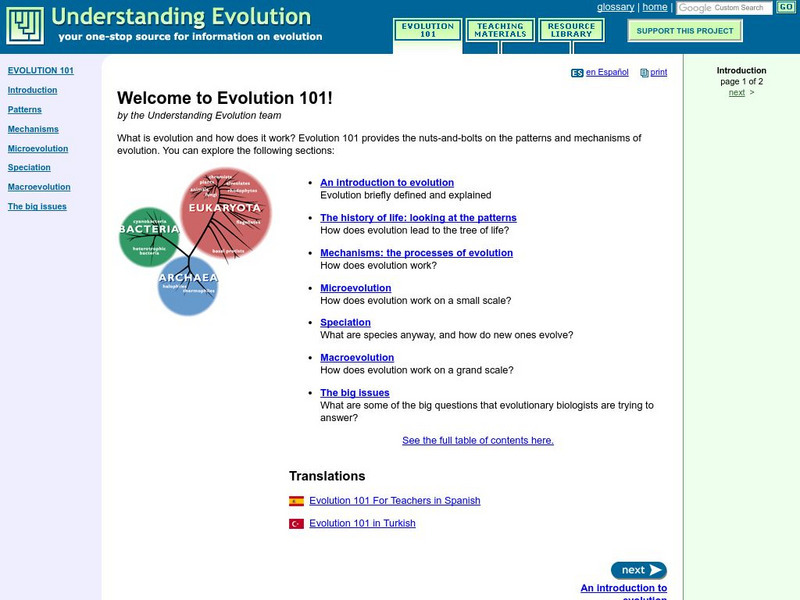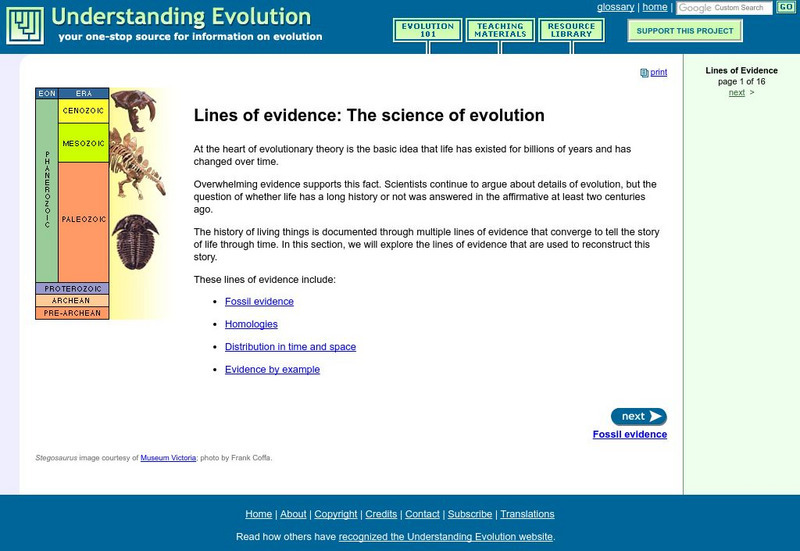Science Buddies
Science Buddies: Investigate Native Plant Evolution With Chloroplast Sequencing
Most native plants are not very well studied. One way we learn more about these plants is by studying the species of plants they are most closely related to. In this science project you will sequence part of the chloroplast genome from a...
Science Buddies
Science Buddies: Use Dna Sequencing to Trace the Blue Whale's Evolutionary Tree
Around 50 million years ago, the mammalian ancestor of today's whales returned to the ocean. In this genomics science fair project, you will use mitochondrial protein sequencing to trace the evolution of whales and identify their closest...
Yale University
Yale New Haven Teachers Institute: Evolution of Plants
An extensive coverage of the evolutionary history of plants. Click on a topic in the outline and you'll go to a good discussion on this material.
Science Education Resource Center at Carleton College
Serc: The Opposable Thumb as a Human Adaptation: Thumb Taping Lab
Students conduct a short experiment to determine the importance of the opposable thumb by taping their thumb to render it useless while they proceed to do an everyday activity. In the end students will have the opportunity to reflect on...
Estrella Mountain Community College
Estrella Mountain Community College: Phylum Annelida
This section (in table of contents as "Phylum Annelida: Segmented Worms") gives a description of how segmented worms developed certain characteristics as well as it explains the differences in the evolution of different classes of...
Talk Origins Archive
Exploring the Creation/evolution Controversy: Problems With a Global Flood
This site provides numerous arguements that refute the existence of Noah's Ark. Covers the building of the ark, gathering of the animals, the flood itself, and many more topics.
Talk Origins Archive
The Origin of Species, Chapter 14
The entire text of Charles Darwin's book, The Origin of Species is available on this site. This link is specifically for the chapter that discusses embryology as evidence for evolution.
American Institute of Biological Sciences
Action Bioscience: Evolution: Fact and Theory
The theory of evolution is a theory which gives an explanation to a variety of known facts that justify the changes of nature over time. Explore the facts and theory offered in this article.
American Institute of Biological Sciences
Action Bioscience: Intelligent Design?
Immerse yourself in evidence supporting and rejecting the ideas of intelligent design.
American Institute of Biological Sciences
Action Bioscience: Natural Selection: How Evolution Works
An interview with Douglas Futuyma, renowned evolutionary scientist, explaining the theory of natural selection and how it steers toward evolution.
Encyclopedia of Earth
Encyclopedia of Earth: On the Origin of Species (Historical E Book)
The complete original text of On the Origin of Species by Charles Darwin.
Encyclopedia of Earth
Encyclopedia of Earth: Evolutionary Biology: Evolution in Action
Scientific article discussing the evolutionary processes involved when an insect species splits into two other distinct species. (Published: February 28, 2011)
Encyclopedia of Earth
Encyclopedia of Earth: Evolutionary Biology: Darwin, Charles
A biography of Charles Darwin.
Encyclopedia of Earth
Encyclopedia of Earth: Evolutionary Biology: Agassiz, Louis
Biography of Louis Agassiz, a natural historian and a contemporary of Charles Darwin. He was most famous for developing his theory of an Ice Age. Agassiz argued vehemently against the theory of evolution, based on his interpretations of...
Museums Victoria
Melbourne Museum: Evolution
Although this is an education kit intended to accompany an exhibition on evolution at this museum. it is useful for high school Biology classes for its excellent background information on the latest ideas about the theory of evolution,...
Other
St. Bonaventure University: Evolution and Origins of Disease
Learn about natural selection and the defenses that are built in to the human body. Topics include pathogens and the evolution of defenses.
Other
Hooper Virtual Paleontological Museum
This site provides a virtual tour to the Hooper Virtual Paleontological Museum. There are many virtual exhibits to visit through a series of links, including Mass Extinctions and Human Evolution. Very descriptive and fun tour!
Other
University of Maryland: Darwin Wallace Evolution Paper
A comprehensive description of the papers on Natural Selection published by both Darwin and Wallace in 1858. Includes full copy of Wallace's paper, 'On the Law which has regulated the Introduction of New Species.' Also includes...
Other
Institute of Human Origins: Becoming Human
Multimedia-rich guide for anyone making their way through a study of human origin. Find information and analysis about the fossil record, comparative anatomy, theories, and the cultural adaptations of humans and their ancestors. With an...
Other
Blackwell Publishing: Evolution: Adaptive Explanation
These pages are part of a site called Evolution that accompany a textbook by the same name. Mark Ridley is the author. There is a large amount of information available about adaptations and their role in evolution.
Other
University of Montana: Teach Evolution and Make It Relevant
A description of the process of evolution explaining the Hardy-Weinberg Principle and the mechanisms that cause it. Also the website contains links for lessons on simulation of the natural selection process in the classroom and how the...
University of California
University of California Museum of Paleontology: Welcome to Evolution 101
What is evolution? This thorough site provides the basics of evolution focusing on the history of life, processes of evolution, microevolution, macroevolution, and more.
PBS
Pbs: The Shape of Life
Companion site for the 8-part PBS series, "The Shape of Life." Each section focuses on a different phylum, from porifera through chordata. This site is highly informative, with beautiful photography.
University of California
Understanding Evolution: Lines of Evidence: The Science of Evolution
Evolution can be supported by the lines of evidence which are presented in this resource. Recognize these lines: fossil evidence, homologies, distribution in time and space, and evidence by example.






